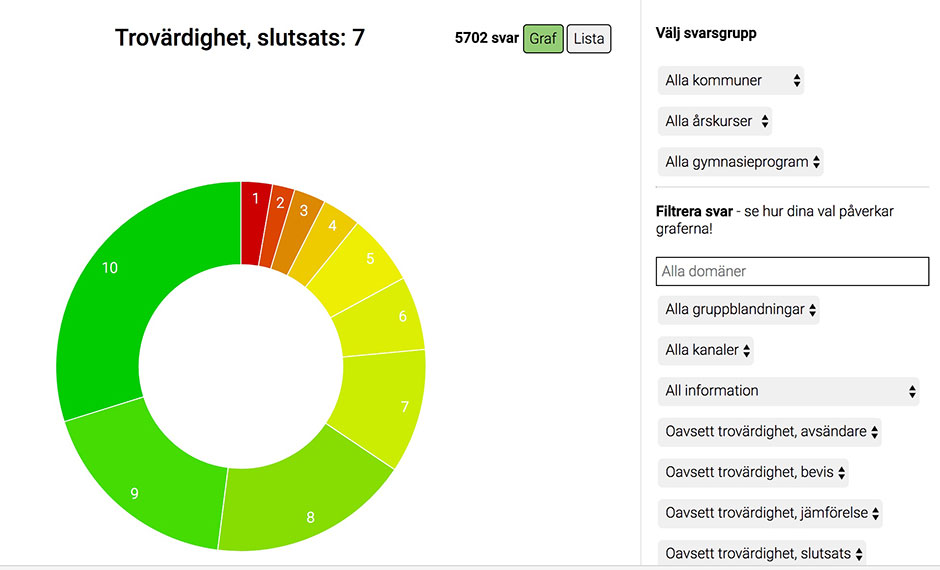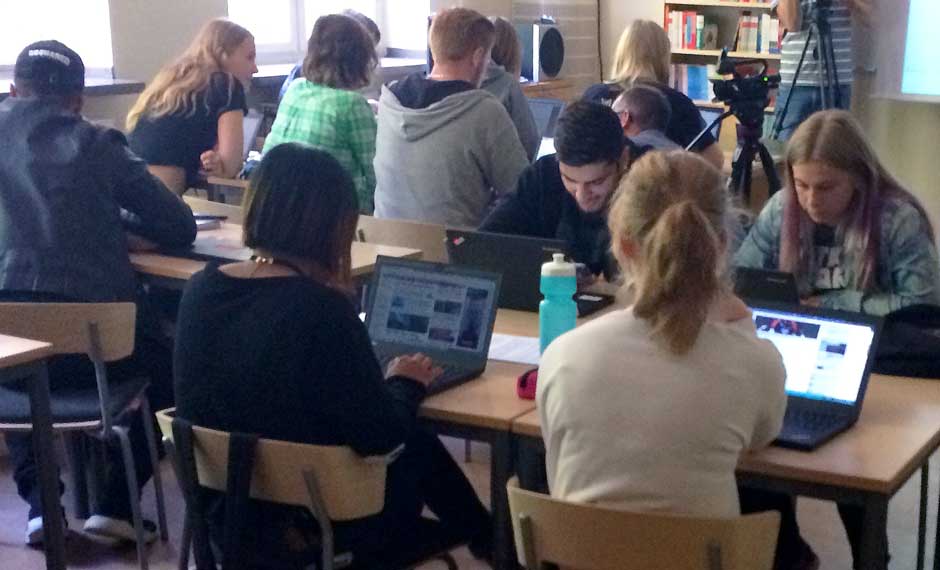Press Release 24 October 2017
How credible do teenagers think the news in their digital news feeds is? And where do they get their news from? Around 6,000 pupils have been helping researchers to investigate these questions in a citizen science project involving schools across the whole of Sweden.

Preliminary results of the experiment show that Swedish teenagers get their news on social media from a broad range of sources, most of which they perceive to be credible. Facebook is the largest news source on social media, although not viewed as the most reliable.
The News Evaluator experiment was run as part of the 2017 European Researchers’ Night activities in Sweden and is a collaboration between the non-profit organisation VA (Public & Science), Uppsala University and RISE Interactive. Using a newly developed digital tool, pupils in secondary and upper secondary school were asked to categorise and evaluate the credibility of the news in their news feeds during two weeks in September. As well as contributing to research in this area, the experiment is designed to teach young people how to assess information according to scientifically proven methods.
”We are delighted with the response and engagement from pupils and teachers. They have done a fantastic job as research assistants in this unique experiment,” said Thomas Nygren, associate professor at Uppsala University and researcher responsible for the experiment.
The experiment has generated a lot of media attention all over Sweden, including features on national radio and television.
Most news viewed as credible
A preliminary analysis of the results shows that pupils believe that most news has a high credibility. At the same time, eight percent of the 5,700 evaluated news is rated as not coming from credible sources. Nine percent of the news is considered to make poor use of evidence, and a similar percentage of news doesn’t stand up when cross-checked against other sources. Lifestyle and entertainment news is generally considered to be less credible than other categories, such as sports, politics and crime.

A variety of news sources
The pupils’ news comes from a variety of sites, of which Aftonbladet.se, the website of a daily Swedish tabloid, is the most popular. Daily and evening press and public service media feature prominently in their news feeds and news from these sources is generally considered credible. However, other news sites that are mostly seeking to attract clicks are viewed as less reliable.
Most news in social media reaches Swedish teenagers via Facebook (58%), followed by Instagram (22%), Snapchat (10%) and Twitter (9%). With regards to the pupils’ assessment of the credibility of the news distributed via social media, Twitter’s news gets the highest rating (7.4 on a scale from 1 to 10), followed by Instagram (6.8), Facebook (6.4), and Snapchat (6).
Next steps
Once the collected data has been fully analysed, a popular science research report will be published in Spring 2018. The digital tool used by the pupils to assess their news will also continue to be developed. The aim is for the tool to be widely used for teaching source criticism in schools, both in Sweden and internationally.
The mass experiment was carried out with support from Vinnova, Sweden’s Innovation Agency, and the EU’s Horizon 2020 programme via European Researchers’ Night.
For more information, please contact Fredrik Brounéus, Project Manager at VA (Public & Science).
More about VA’s mass experiments.

